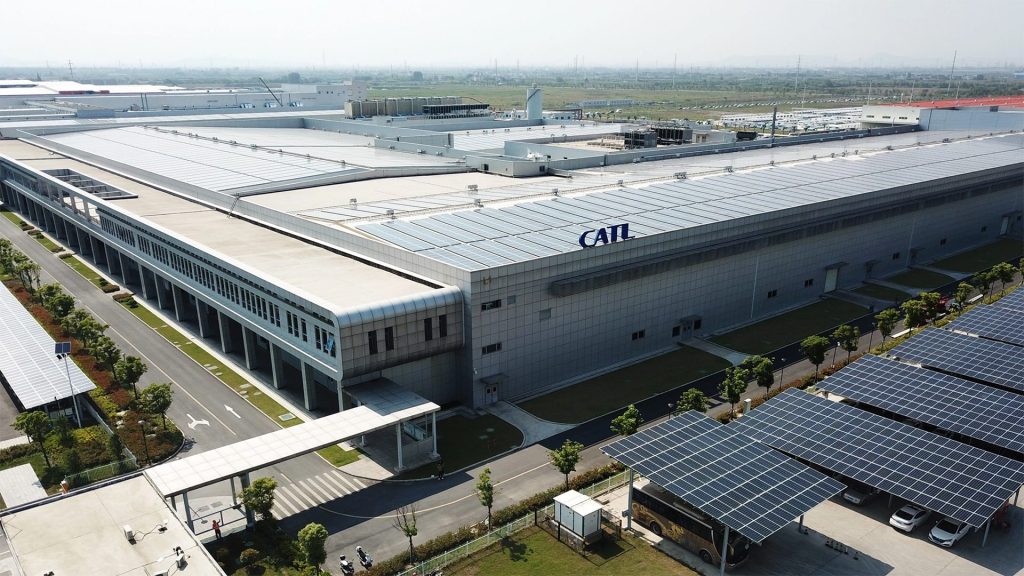
Contemporary Amperex Technology (CATL) is reportedly preparing to launch a new 8-series high-nickel battery in 2026. The packs will be installed in range-extended vehicles from leading electric vehicle makers.
The 8-series high-nickel battery is a type of ternary lithium battery. Its cathode materials contain about 80% nickel, with the rest split between cobalt and manganese, which gives the battery its name.
This chemistry once had its moment in the spotlight.
A few years ago, 8-series batteries powered dozens of models across more than ten brands, including Aion, Nio, and Xpeng. But the technology was still in its early stages, verification was incomplete, and thermal management solutions were underdeveloped. Reports of thermal runaway incidents were common.
For a time, the industry treated the “8-series” label with caution. Yet CATL insisted it would not abandon development, arguing that giving up on 8-series batteries would mean giving up on the premium market.
The push for larger batteries in plug-in hybrid cars, including range-extended models, has created an opening for the technology to return.
Some range-extended models launched this year already feature packs exceeding 60 kilowatt-hours. By next year, according to 36Kr, plug-in hybrid vehicles, including range-extended ones, are expected to carry packs approaching 80 kWh.
Preliminary tracking by 36Kr suggests at least four models with around 80 kWh capacity are already in the pipeline. These include Leapmotor’s upcoming D series and Xiaomi’s range-extended car scheduled for release next year.
While not all of these vehicles will adopt CATL’s 8-series batteries, the race for bigger packs and longer electric-only ranges is creating a clear opportunity for high-nickel chemistry.
Compared with lithium iron phosphate (LFP) batteries, 8-series batteries deliver higher energy density per unit mass and better overall performance. This enables vehicles to achieve long range with smaller packs, reducing overall weight while maintaining power.
According to one industry insider, early evaluations suggest that the performance boost over mid-nickel batteries is not dramatic in system-level energy density. Still, for platforms already at the edge of their engineering limits, the technology is worth testing.
Cars are packing bigger batteries
In recent years, the drive for longer electric-only range has led automakers to install larger packs in plug-in hybrid and range-extended models.
Some vehicles launched this year already carry batteries rated above 60 kWh. For instance, IM Motors’ LS6 range-extended edition comes with CATL’s “Super Xiaoyao Max” battery, delivering 66 kWh and a CLTC-certified range of more than 450 kilometers, outpacing some fully electric models.
CLTC refers to the China Light-Duty Vehicle Test Cycle, a standard introduced by the Chinese government to measure energy consumption, range, and emissions.
Another example is Maextro’s S800 “Xinghui Executive” edition, which uses CATL’s Qilin battery and achieves a CLTC-rated range of 400 km.
Nearly half of all range-extended vehicles now on the market offer more than 200 km of electric-only range.
The trend will accelerate next year.
Leapmotor’s D platform will support 80 kWh packs across multiple vehicles, including the D19 SUV and an MPV. Both are expected to reach a pure electric range of 500 km. Xiaomi’s upcoming range-extended vehicle will also use a pack close to 80 kWh, while Great Wall Motor has confirmed plans for a plug-in hybrid model with an 80 kWh pack and a pure electric range of more than 400 km.
If automakers use LFP batteries to reach 500 km of range, the only option is to stack more modules, which makes vehicles significantly heavier. Industry insiders estimate that some of next year’s plug-in hybrids and range-extended cars could exceed three tons.
Beyond weight, overpacking batteries could affect crash safety and overall vehicle stability.
That means bigger packs aren’t a universal solution. Thus, for automakers seeking to balance range, weight, safety, and handling, high-nickel batteries are emerging as an alternative.
Promise and risks of high-nickel batteries
Still, 8-series batteries come with challenges.
Increasing nickel content reduces thermal stability and shortens cycle life. For this reason, most of today’s mainstream ternary batteries use mid-nickel chemistries, which include 40–50% cobalt and manganese in varying ratios.
These mid-nickel batteries already offer a reasonable balance between range, weight, crash safety, and performance, making them suitable for many plug-in and range-extended vehicles.
Even so, some automakers are betting on 8-series packs. The appeal is twofold: the potential for longer range and stronger performance in a competitive market, and the chance to use high-nickel batteries as a trope to shape consumer perception.
For CATL, the stakes are higher. Its dominance in ternary batteries is being eroded by the rise of LFP chemistry, and it needs a product that can restore both the relevance of high-nickel cells and its influence in the industry.
By relaunching 8-series batteries after years of dormancy, CATL is signaling progress in thermal management and cycle life technology that could address earlier shortcomings.
But uncertainty lingers.
Although 8-series batteries reduce cobalt content and ease raw material procurement costs, production and R&D remain expensive without economies of scale. Vehicles equipped with these packs may not see significantly lower costs despite their smaller size.
Whether high-nickel prismatic batteries can reclaim a place in the mainstream remains an open question.

